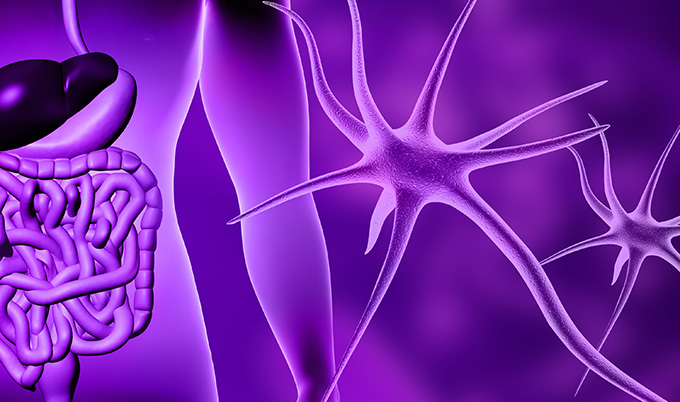Gut bacteria
Scientists identify a new way gut bacteria break down complex sugars
Published on: 22 March 2017
New light has been shed on the functioning of human gut bacteria which could help to develop medicines in the future to improve health and wellbeing.
Scientists have found that single microorganisms in the human gut have the ability to disassemble the most complex of carbohydrates in our diet.
It is the first time such a discovery has been made and it is hoped that this may be used to one day identify new pre- and pro-biotic products to enhance people’s health.
Led by Professor Harry Gilbert, from the Institute for Cell and Molecular Biosciences at Newcastle University, the study is published today (Wednesday) in the leading academic journal, Nature.

Major impact on health and physiology
Bacteria in the large bowel – the human gut – has a major impact on health and physiology as they help to disintegrate substances in food that we cannot digest, such as starches and fibre.
The main source of nutrients available to the gut bacteria are carbohydrates from the human diet, which the body is unable to metabolise.
The most complex of these carbohydrates is the plant polysaccharide, ‘rhamnogalacturonan II (RG-II)’, which can also be found at elevated levels in red wine.
Previously it was thought that only groups of bacteria would be able to metabolise and breakdown RG-II, reflecting its complex structure. However, this research shows that single organisms present in the gut also have the ability to do this.
Professor Gilbert said: “Our research reports how a highly complex biological process in the body is achieved.
“This is an exciting step forward in the understanding of how human gut bacteria work and has implications for future research.”
A novel enzyme family
The team of international scientists found that RG-II is metabolised through the action of a type of bacterial enzyme, known as glycoside hydrolases, which target the complex carbohydrates sugars in the large bowel.
The bacteria that can metabolise RG-II contain several genes that encode proteins that previously had no known action until now. The group have shown that seven of these genes produce glycoside hydrolases - which split the glycosidic linkage that joins sugars together in polysaccharides - and contribute to the breakdown of RG-II.
Each of these seven glycoside hydrolases are founding members of a novel enzyme family. Three of the glycoside hydrolases that contribute to RG-II degradation break glycosidic linkages that have not previously been shown to be susceptible to biological attack, and these enzymes display novel catalytic functions.
Professor Gilbert said: “This study has potential applications as understanding how this highly complex carbohydrate, which is an integral component of our diet, is utilised offers opportunities for developing new pre- and pro-biotic strategies to improve human health.
“There is much more exciting work to be done in this area. To fully understand the mechanisms by which complex carbohydrates are utilized by human gut bacteria is relevant to medicine as this microbial community has a significant impact on the body.”
Reference:
Complex pectin metabolism by gut bacteria reveals novel catalytic functions
Didier Ndeh, Artur Rogowski, Alan Cartmell, Ana S. Luis, Arnaud Baslé, Joseph Gray, Immacolata Venditto, Jonathon Briggs, Xiaoyang Zhang, Aurore Labourel, Nicolas Terrapon, Fanny Buffetto, Sergey Nepogodiev, Yao Xiao, Robert A. Field, Yanping Zhu, Malcolm A. O’Neill, Breeanna R. Urbanowicz, William S. York, Gideon J. Davies, D. Wade Abbott, Marie-Christine Ralet, Eric C. Martens, Bernard Henrissat and Harry J. Gilbert



